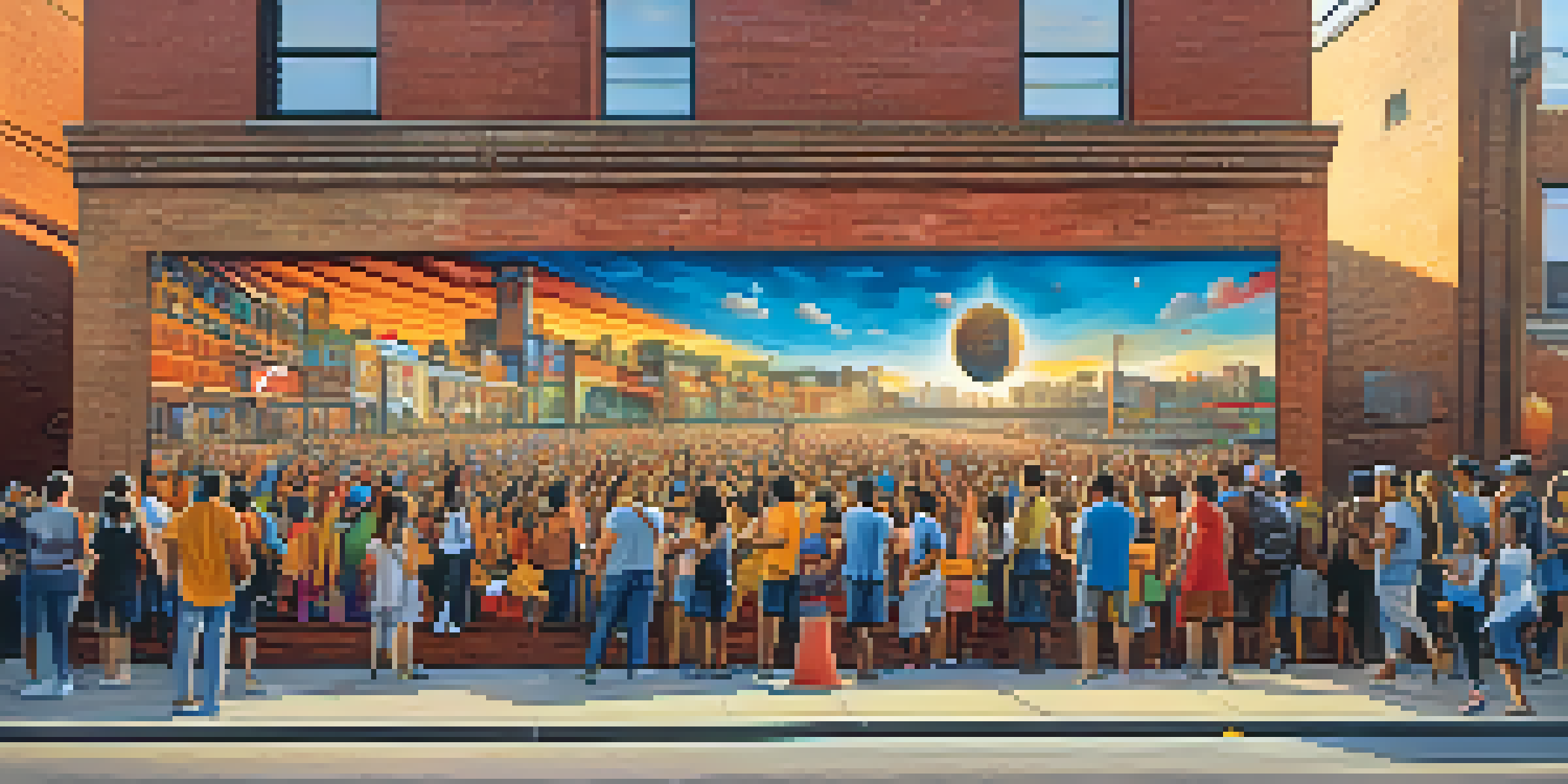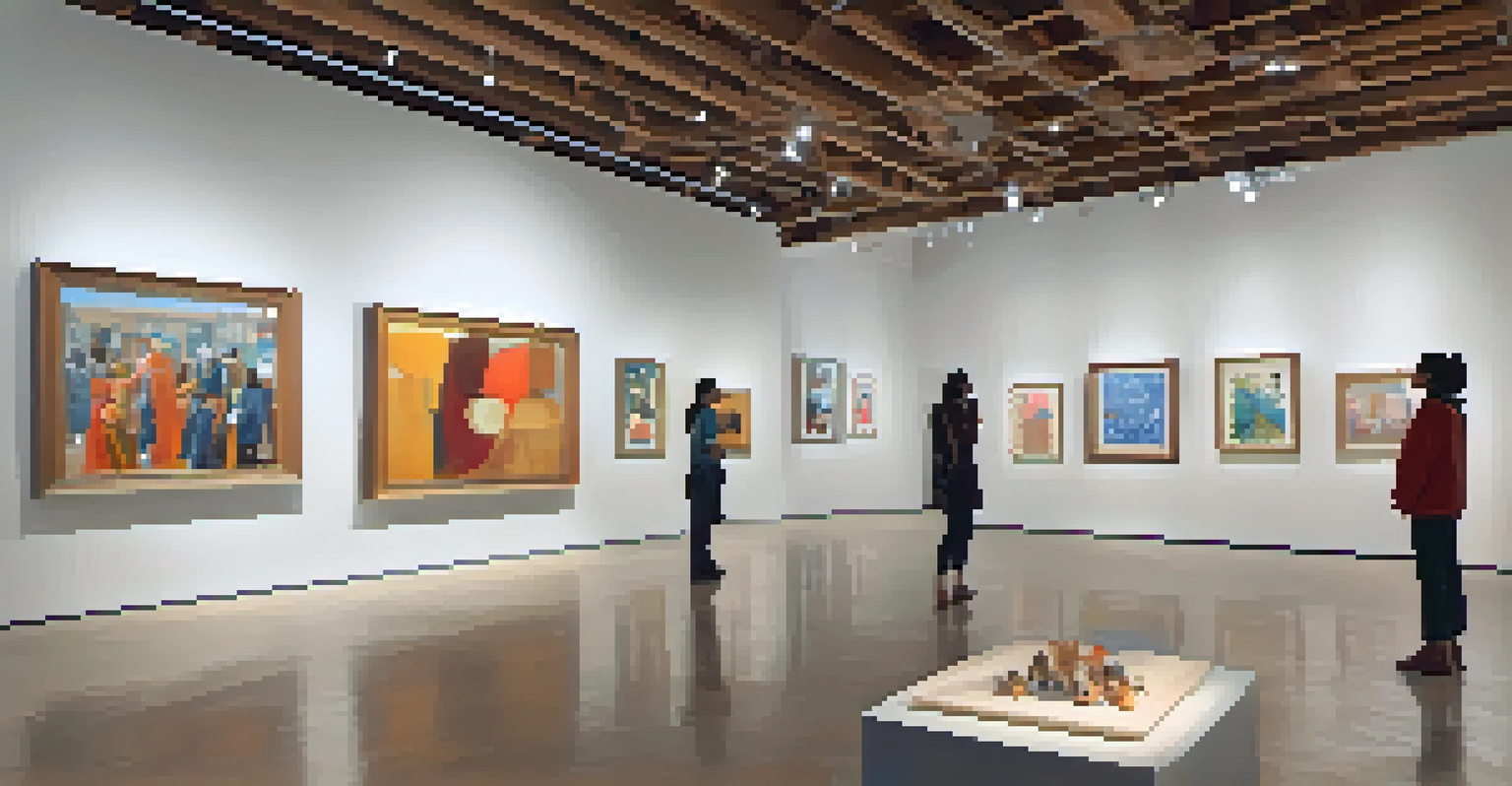Art and Society: The Relationship Between Art and Culture

Understanding the Essence of Art in Society
Art is more than just visual appeal; it’s a reflection of society's values and beliefs. From ancient cave paintings to modern digital installations, art has always mirrored the human experience. It captures emotions, challenges norms, and often serves as a catalyst for social change.
Art is the most beautiful of all lies.
When we look at art, we’re not just observing colors and shapes; we’re engaging with the thoughts and feelings of the time it was created. For example, the works of artists like Picasso during the Spanish Civil War highlight the struggles and turmoil of their society. This connection between art and societal context is crucial to understanding its significance.
Related Resource
Ultimately, art provides a lens through which we can view our culture. It invites dialogue, encourages empathy, and fosters a deeper understanding of the human condition, making it an essential component of our collective identity.
Art as a Reflection of Cultural Identity
Cultural identity is intricately woven into the fabric of art. Each piece often tells a story about the community it originates from, showcasing traditions, beliefs, and experiences unique to that culture. For instance, Indigenous art often incorporates myths and natural elements that resonate with the community’s heritage.

When artists draw inspiration from their cultural backgrounds, they create a bridge between the past and present. This can be seen in the works of contemporary artists who incorporate traditional techniques while addressing modern issues, thereby keeping their cultural narratives alive. It’s a beautiful blend of honoring the past while innovating for the future.
Art Reflects Society's Values
Art serves as a mirror to societal beliefs and emotions, capturing the essence of human experiences across time.
In this way, art becomes a powerful statement of identity. It not only preserves cultural heritage but also fosters pride and unity within communities, reminding us of our shared histories and diverse backgrounds.
The Role of Art in Social Movements
Art has historically played a vital role in social movements, serving as both a tool for expression and a means to mobilize. Think of the iconic images from the Civil Rights Movement or the powerful murals that emerged during protests. These artworks not only captured the spirit of the times but also inspired action and solidarity.
Every artist dips his brush in his own soul, and paints his own nature into his pictures.
For example, the 'We Can Do It!' poster became an empowering symbol for women during World War II, transcending its initial context to embody feminist ideals. Art can provoke thought, challenge the status quo, and ignite a collective consciousness, making it an invaluable asset in the fight for justice.
Related Resource
Moreover, in today’s digital age, social media has amplified the reach of artistic expressions associated with social causes. Artists are using platforms to share their messages, engage audiences, and create movements that resonate globally, showcasing art's enduring power in shaping society.
Art as a Catalyst for Cultural Exchange
Art fosters cultural exchange by breaking down barriers and promoting understanding among diverse groups. When we appreciate art from different cultures, we open ourselves to new perspectives and experiences. This exchange can be seen in galleries and festivals worldwide, where artists showcase their unique traditions to a broader audience.
Take, for instance, the impact of global art fairs like Art Basel, where artists from various backgrounds come together to share their work. These gatherings not only promote individual artists but also cultivate cross-cultural dialogues. They encourage collaboration and inspire new forms of artistic expression that wouldn’t have emerged in isolation.
Cultural Identity Through Art
Art preserves and expresses cultural identity, bridging past traditions with contemporary issues to foster community pride.
Ultimately, these interactions enrich our understanding of the world. Art becomes a universal language, bridging gaps and fostering connections that highlight our shared humanity, reminding us that while our backgrounds may differ, our emotions and aspirations are often the same.
The Economic Impact of Art on Society
Art isn't just a cultural asset; it also has a significant economic impact on society. From galleries and museums to street art and public installations, the art sector creates jobs and stimulates local economies. In many cities, cultural districts thrive on the influx of visitors drawn by artistic endeavors, generating revenue and supporting local businesses.
For example, cities like New Orleans and San Francisco have seen how art festivals can boost tourism and community engagement. These events not only celebrate local talent but also attract visitors, creating a vibrant atmosphere that benefits everyone involved. The economic ripple effect of art can be substantial.
Related Resource
Moreover, investing in the arts can lead to innovation and creativity in various industries. Businesses that embrace artistic collaborations often find enhanced brand identity and customer loyalty. Thus, the relationship between art and the economy is symbiotic, where each element enriches the other.
Challenges Facing the Art Community Today
Despite its importance, the art community faces significant challenges today, including funding cuts, commercialization, and the impact of digital technology. Many artists struggle to find financial support for their projects, leading to a reliance on grants and sponsorships that can sometimes compromise their vision. This challenge raises questions about the authenticity of art in a commercialized world.
Additionally, the rise of digital art and NFTs has transformed the landscape, creating both opportunities and uncertainties. While these innovations have democratized access to art, they also raise issues around ownership, value, and the definition of art itself. The rapid pace of change can leave some artists feeling overwhelmed and disconnected.
Art Fuels Social Movements
Throughout history, art has been a powerful tool for expression and mobilization in social movements, inspiring collective action.
Ultimately, the art community must navigate these challenges while remaining true to its core mission: to reflect society, provoke thought, and inspire change. By fostering resilience and adaptability, artists can continue to thrive and contribute meaningfully to culture and society.
The Future of Art in a Globalized Society
As we look to the future, the role of art in a globalized society is poised to evolve even further. With advancements in technology and communication, artists are now able to collaborate across borders, sharing ideas and techniques in ways previously unimaginable. This interconnectedness can lead to innovative forms of expression that blend diverse cultural influences.
Moreover, the accessibility of art through digital platforms means that anyone with an internet connection can create, share, and experience art. This democratization not only empowers artists but also invites a wider audience to engage with and appreciate different forms of creativity. It opens doors for underrepresented voices to be heard and celebrated.

The future of art is not just about individual expression; it’s about collective creativity and community engagement. As artists continue to explore the intersections of culture and technology, we can anticipate exciting developments that not only challenge our perceptions of art but also deepen our understanding of the world around us.